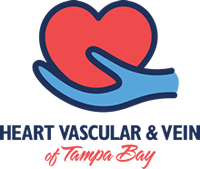Minimally Invasive Endovascular Repair With a Stent Graft
Introduction to Endovascular Repair With a Stent Graft for TAA
OVERVIEW
An endovascular stent graft is like having a small, metal scaffold inside your aorta. It supports the weak area, so you can return to normal activities. If you choose this treatment option, you’ll be joining more than tens of thousands of people withl aortic aneurysm who’ve relied on stent grafts for relief over the past decade.
WHAT IS A STENT GRAFT?
An endovascular stent graft is a synthetic fabric tube (graft) supported by a metal structure (stent). The stent graft helps to bypass the weakened area of your aorta and keep it from rupturing.
The stent graft is designed so that it can be placed inside the damaged area of your aorta, without surgically opening the blood vessel or removing any tissue.
Learn more about endovascular stent grafting.
BENEFITS AND RISKS OF STENT GRAFT
Placement of an endovascular stent graft is done without removing part of your aorta, so recovery time may be shorter. The long-term risks of stent grafting placement are currently unknown. Research is underway to learn more about these risks. As always, there are risks with any type of surgery. The benefits and safety of any surgical procedure must be carefully evaluated. Ask your doctor how these potential benefits and risks may affect you.
Benefits of Stent Graft Therapy
Endovascular stent graft therapy is a minimally invasive surgical procedure. It is called minimally invasive, because with endovascular stent graft therapy it is not necessary to perform open-chest surgery or remove part of your aorta.
For some patients, this reduces the recovery time by several days. In many cases, patients can return home and return to normal activities within 4 to 6 weeks.
Potential Risks Associated with Stent Grafting
Endovascular stent grafting is minimally invasive. However, there is a small, but significant, risk of aneurysm rupture with endovascular stent grafting that is slightly higher than that of open-chest aortic aneurysm repair.
Other complications with endovascular stent grafting include:
- Blood leakages around the stent graft
- Blockage of the flow of blood through the stent graft
- Movement of the stent graft from its original site of placement
- Fracture of the stent graft
- Infection
- Rupture of the aneurysm or aorta
To monitor these possible complications, your doctor will ask you to schedule periodic visits after the procedure. It is important to keep these appointments to make sure your stent graft is working correctly.
ENDOVASCULAR STENT GRAFTING IS NOT FOR EVERYONE
Your aneurysm may not have the right shape, or it may be too close to other organs. Your doctor or vascular surgeon will help you decide whether endovascular stent grafting or open surgery is the best treatment option for you.
Information on this site should not be used as a substitute for talking with your doctor. Always talk with your doctor about diagnosis and treatment information.
